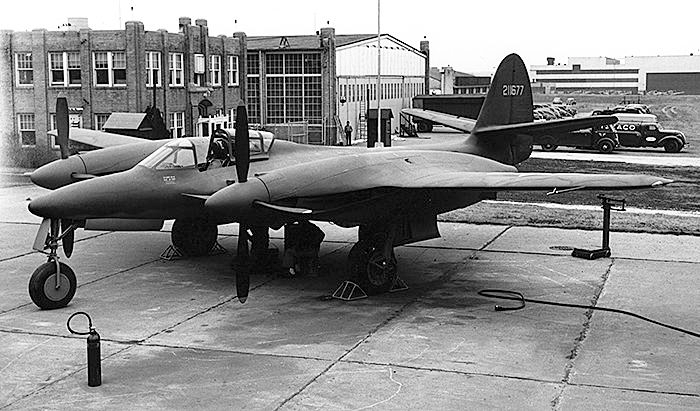McDonnell XP-67 “Moonbat” X Planes book review

As far as I am aware this is the first book solely about the lusciously sexy XP-67. This is a very welcome subject as the cancelled ‘Moonbat’ is certainly one of the most charismatic aeroplanes ever flown.
Whereas most other aircraft of the time (1944) were of the conventional ‘sausages with planks’ configuration, the XP-67 interceptor was of sleek blended form and featured a raft of radical new technologies, but it was not the Moonbat.

For Moonbat fans such as myself, the rather brutal dismissal of the nickname ‘Moonbat’ in the introduction (apparently it was not used at the time of the project) was disappointing – as this nickname was perfect for the aircraft, and certainly superior to the ‘Flying Fillet’ title actually used by the USAAF. The XP-67 is deeply Batmanesque in appearance, and the name Moonbat seems absolutely apt. The word ‘moonbat’ is a pejorative term in the US to describe a person with extreme left-wing political views (which considering how far right much of the US has swung today, would include anyone not in favour of invading and colonising Canada). Its origins may lie with the Great Moon Hoax of 1835 when the New York Sun ran a fake story about a civilisation of winged bat people on the moon – or a poem from 1890 that employed the term to refer to unsound ideas. Significantly it was also used as a name for a spaceship in the 1947 sci-fi short story Space Jockey by Robert A. Heinlein, himself an aeronautical engineer, and naval officer

The blended approach used by the XP-67 was an idea put forward by Russian aerodynamicist Nicolas Woyevodsky in 1921, and explored by the British aircraft company Miles. The form was intended to add additional lift from an aerofoil cross-section fuselage and provide greater interior volume at a smaller drag penalty. On a blended platform, the wing and fuselage are blended together for superior aerodynamics. This is described in excellent detail in the book as are the many other weird and appealing technologies featured in ’67.
The authors

Steven Richardson was an aero engineer who worked at McDonnell and Boeing, and Peggy Mason was in comms at Boeing and USAF, and their insider access has clearly been a help as the selection of photographs and diagrams are an absolute feast. The text is dense with technical insights and a great deal has been packed into this 80-page paperback. The density of information is relieved by some first-class profiles and action-packed digital artworks by Adam Tooby. The research effort that has gone into this book is extremely impressive and suggests a labour of love. Perhaps the authors’ professional backgrounds led them to a fascination with this as the first real McDonnell design. This is the aircraft that started McDonnell’s legacy and led to its dominance of the fighter world from 1960 until the end of the 20th century.
The XP-67 came at the most exciting time in fighter development when the need was greatest, the piston engine was reaching its performance zenith and the immediate future form of fighter aircraft was utterly unpredictable. As the book describes, the influence of the Moonbat (there I said it!), like many innovative aircraft, was subtle and long-lived. The curves and the research data would inform the Phantom I and Banshee, and in turn, Phantom II, and the culmination of the blended wing effort can be seen in today’s B-1B and B-2, as well as many UCAVs and future airliner concepts. Along the way, some other extremely beautiful blended forms were studied, notably (as the book mentions) the wonderful somewhat Bugatti 100-like McDonnell-Douglas Model 226 Quiet Attack Aircraft, an early US Navy stealth study that inherited much from the Flying Fillet.

I wholeheartedly recommend this as the go-to book for anyone interested in the magnificent XP-67. This an extremely illuminating book on the sexiest aircraft McDonnell ever built. A word of caution though, it comes out on exactly the same day (November 24 2022) as the incredible Hush-Kit Book of Warplanes so you should start saving!
RATING: 4/5
You can order it here.


Take a look at that gal on right side of Space Jockey painting then do a Google image search for Lucille Ball …
This plane certainly could have fit the neo-noir stylings and have been a fit Batwing in the Tim Burton films; I do wonder how would one deal with the incontinuity of the Batmobile having a jet turbine whilst the Batwing is prop powered. If you were to put jets in place of the piston engines, the end result would heavily suggest the Naboo Starfighter from the Star Wars Republic era.